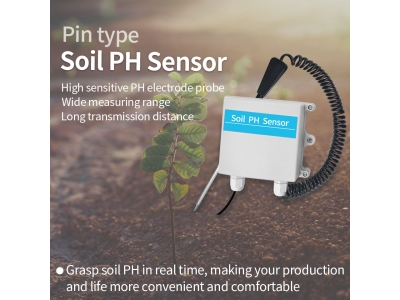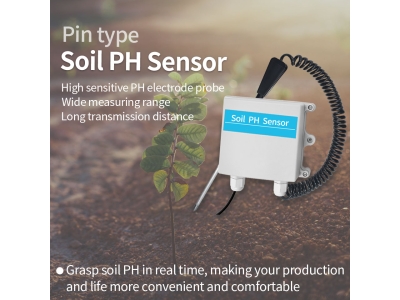In today's rapidly changing world, the need for sustainable land management and crop optimization has never been more critical. With a growing global population and increasing pressure on natural resources, it is essential to find innovative and efficient ways to maximize agricultural productivity while minimizing environmental impact. One promising solution lies in the use of soil sensors to gather valuable data that can inform decision-making and improve farming practices.

Soil sensors are a type of agricultural technology that can provide real-time information about soil conditions, such as moisture levels, temperature, and nutrient content. By collecting and analyzing this data, farmers and land managers can gain a deeper understanding of their land and make more informed decisions about irrigation, fertilization, and crop rotation. This can lead to more efficient resource use, higher crop yields, and reduced environmental degradation.
One of the key benefits of soil sensors is their ability to provide accurate and timely information about soil moisture levels. This is particularly important in regions where water is a scarce resource, as over-irrigation can lead to water waste and soil erosion, while under-irrigation can result in crop stress and reduced yields. By using soil sensors to monitor moisture levels, farmers can ensure that their crops receive the right amount of water at the right time, leading to more efficient water use and healthier plants.
In addition to moisture monitoring, soil sensors can also provide valuable insights into soil nutrient levels. By measuring the concentration of essential nutrients such as nitrogen, phosphorus, and potassium, farmers can make more informed decisions about fertilization, reducing the risk of over-application and nutrient runoff. This not only saves money for farmers but also helps to protect water quality and reduce the environmental impact of agriculture.
Furthermore, soil sensors can also be used to monitor soil temperature, which is crucial for understanding the impact of climate change on agricultural productivity. By tracking changes in soil temperature over time, farmers can adapt their planting schedules and crop selection to optimize yields in a changing climate. This can help to mitigate the effects of extreme weather events and ensure a more reliable food supply for the future.
The use of soil sensors for sustainable land management and crop optimization is not only beneficial for farmers but also for the environment. By using data-driven insights to make more efficient use of resources, farmers can reduce their environmental impact and contribute to the preservation of natural ecosystems. This is particularly important in the face of climate change, as sustainable land management practices can help to build resilience in agricultural systems and mitigate the effects of a changing climate.
In addition to the environmental benefits, the use of soil sensors can also lead to economic advantages for farmers. By optimizing resource use and improving crop yields, farmers can increase their profitability and long-term sustainability. This can help to support rural economies and ensure the viability of agricultural communities for years to come.
While the potential benefits of soil sensors for sustainable land management and crop optimization are clear, there are still challenges that need to be addressed. One of the main obstacles is the cost of implementing this technology, as soil sensors can be expensive to purchase and install. However, as the technology continues to evolve and become more widely adopted, the cost is likely to decrease, making it more accessible to a wider range of farmers.
Another challenge is the need for education and training to ensure that farmers can effectively use soil sensors to make informed decisions. This will require investment in extension services and agricultural education programs to help farmers understand how to interpret and act on the data collected by soil sensors. By providing the necessary support and resources, governments and organizations can help to overcome this barrier and promote the widespread adoption of soil sensors for sustainable land management.
In conclusion, the use of soil sensors for sustainable land management and crop optimization holds great promise for the future of agriculture. By leveraging the power of data, farmers and land managers can make more informed decisions about resource use, leading to higher crop yields, reduced environmental impact, and greater economic sustainability. While there are challenges to overcome, the potential benefits of this technology are significant, and it is clear that soil sensors have a crucial role to play in the future of agriculture.






